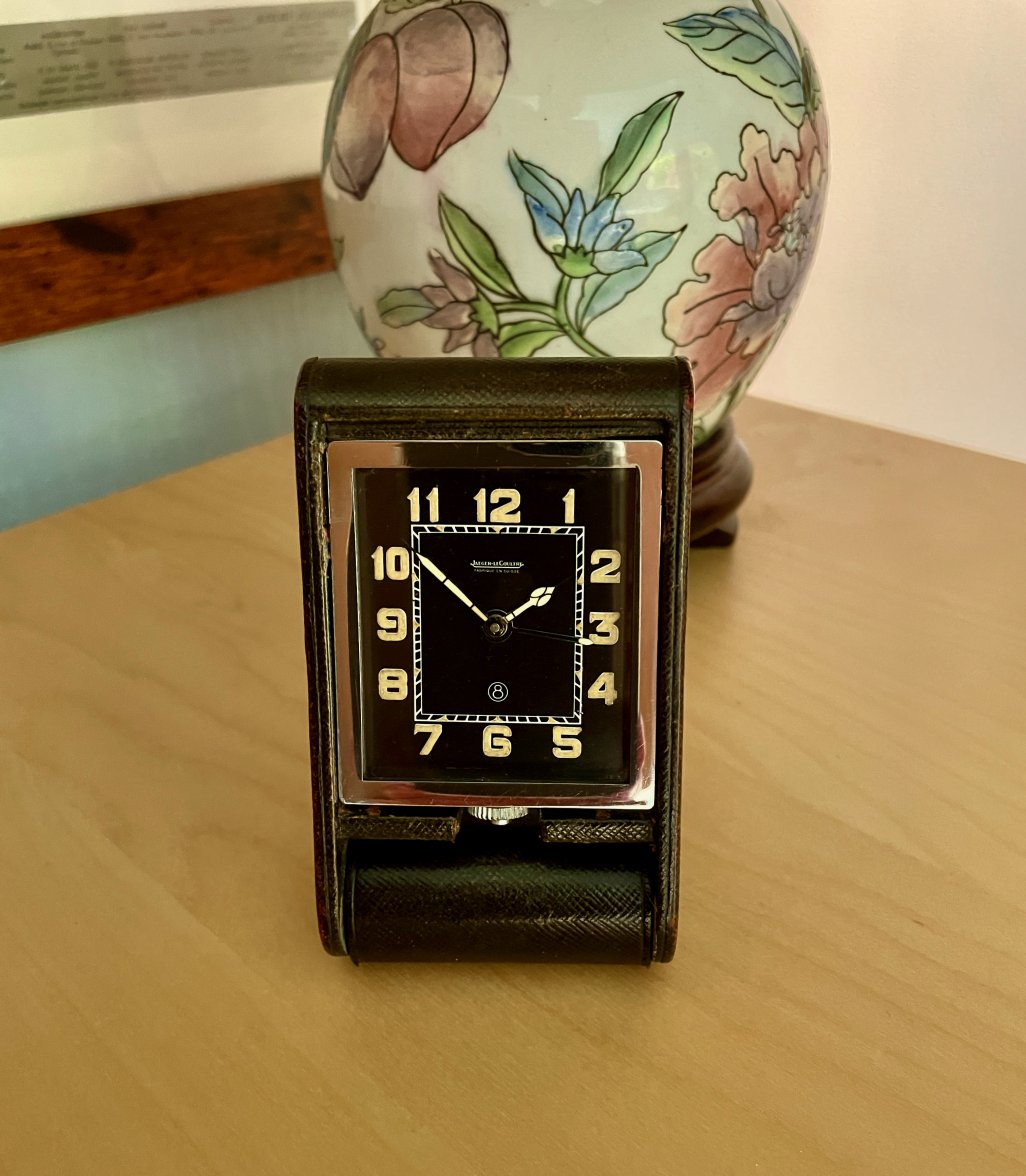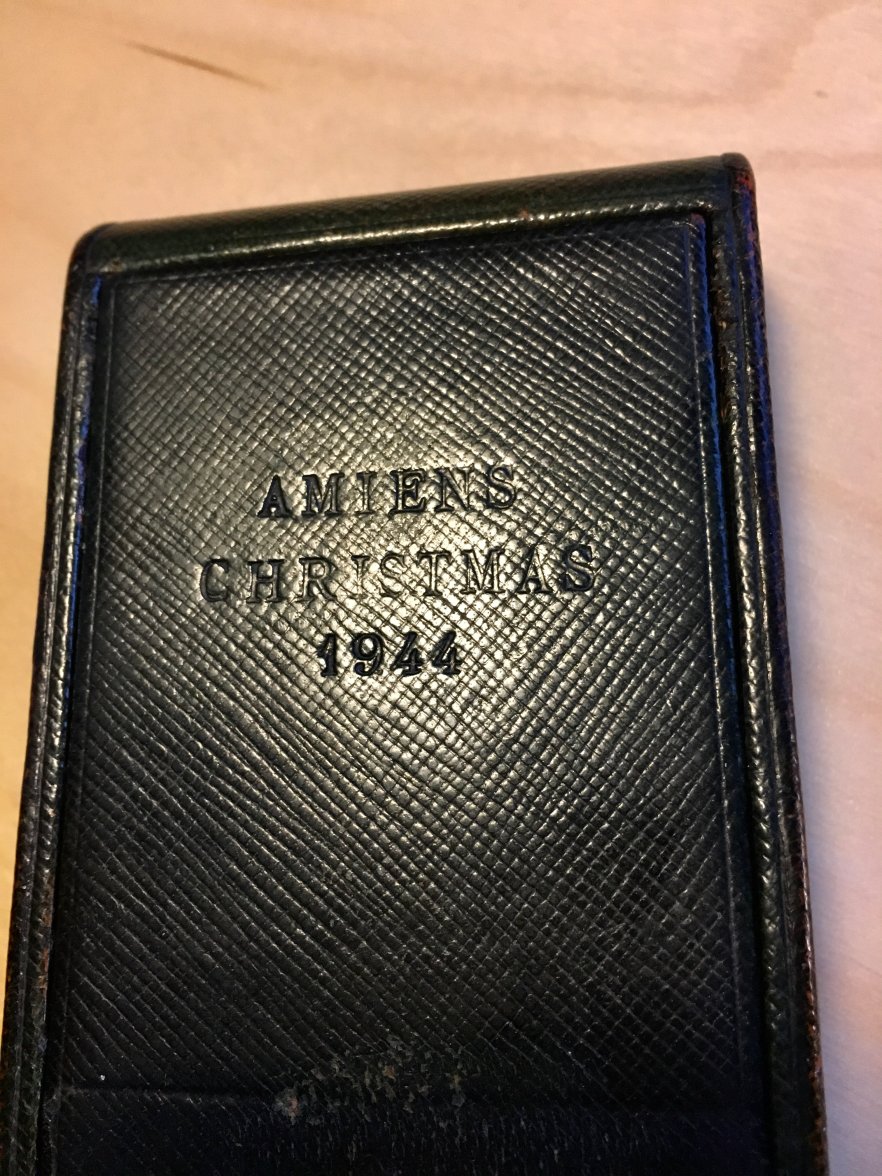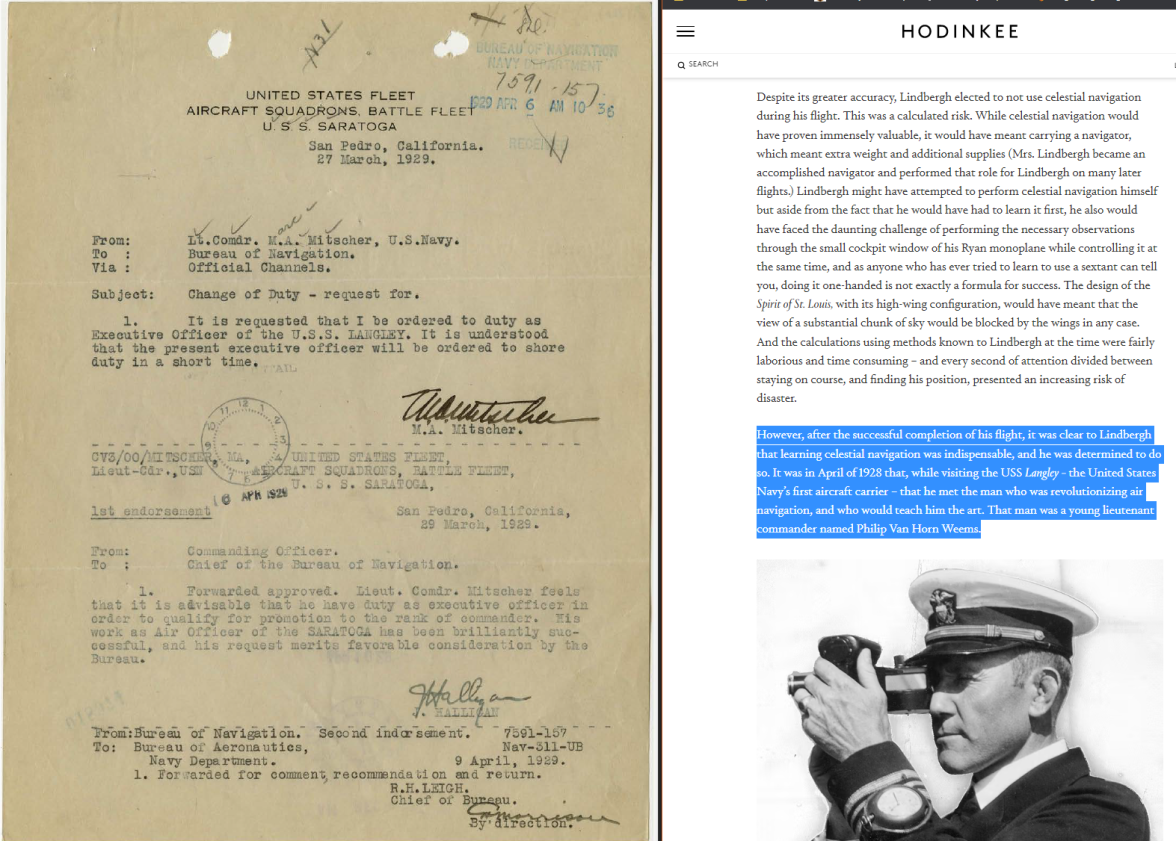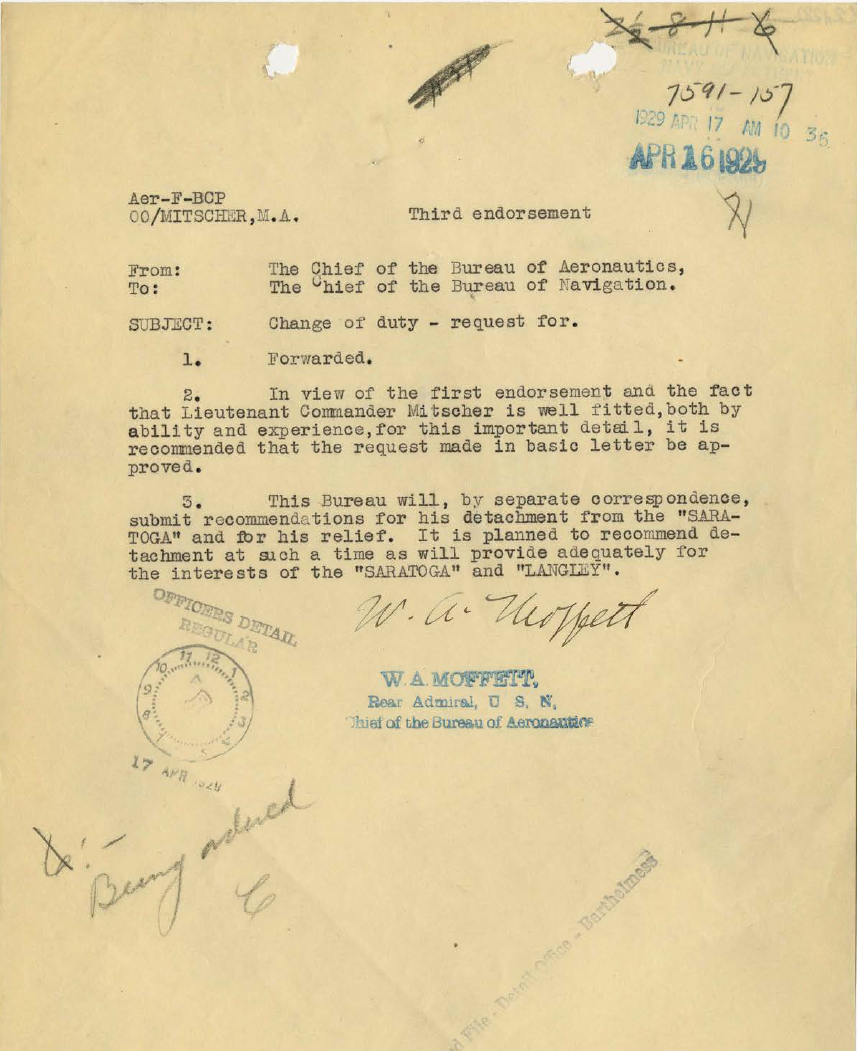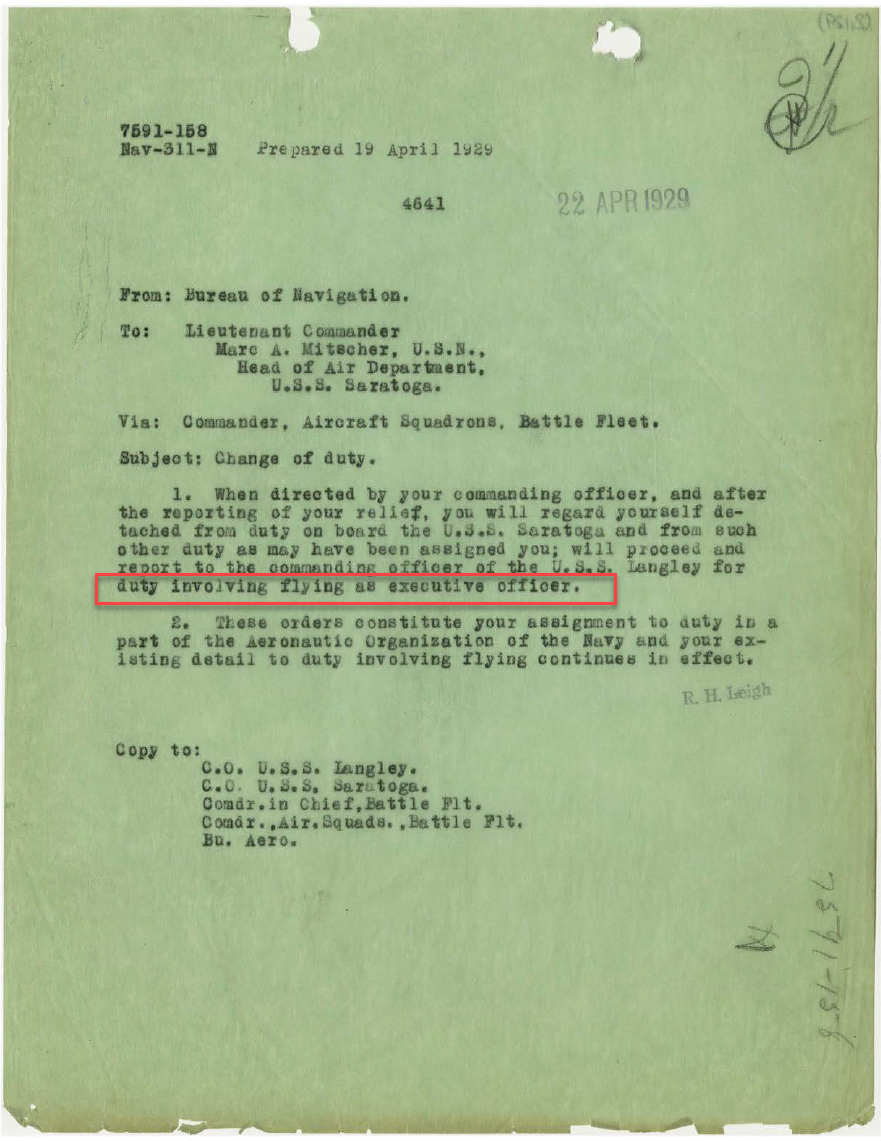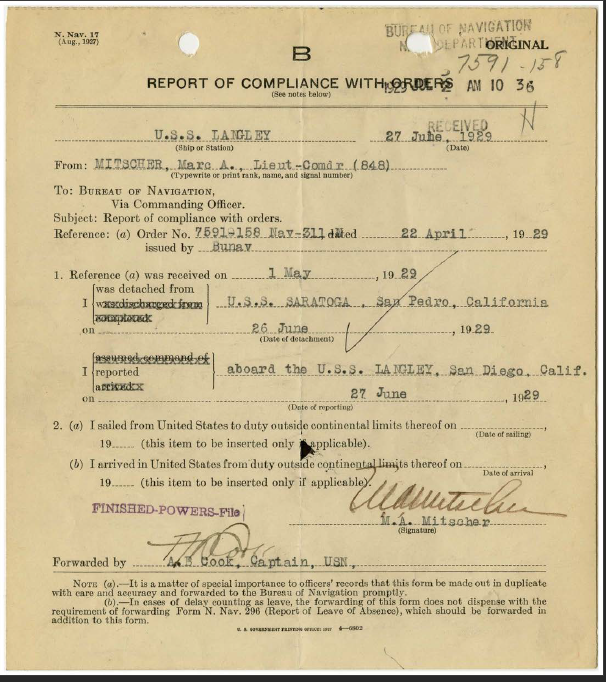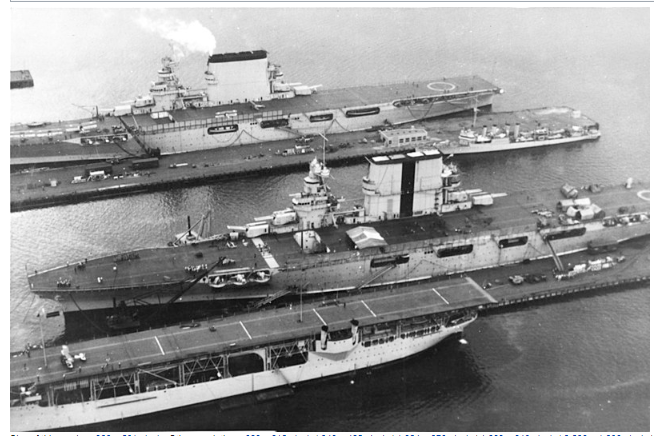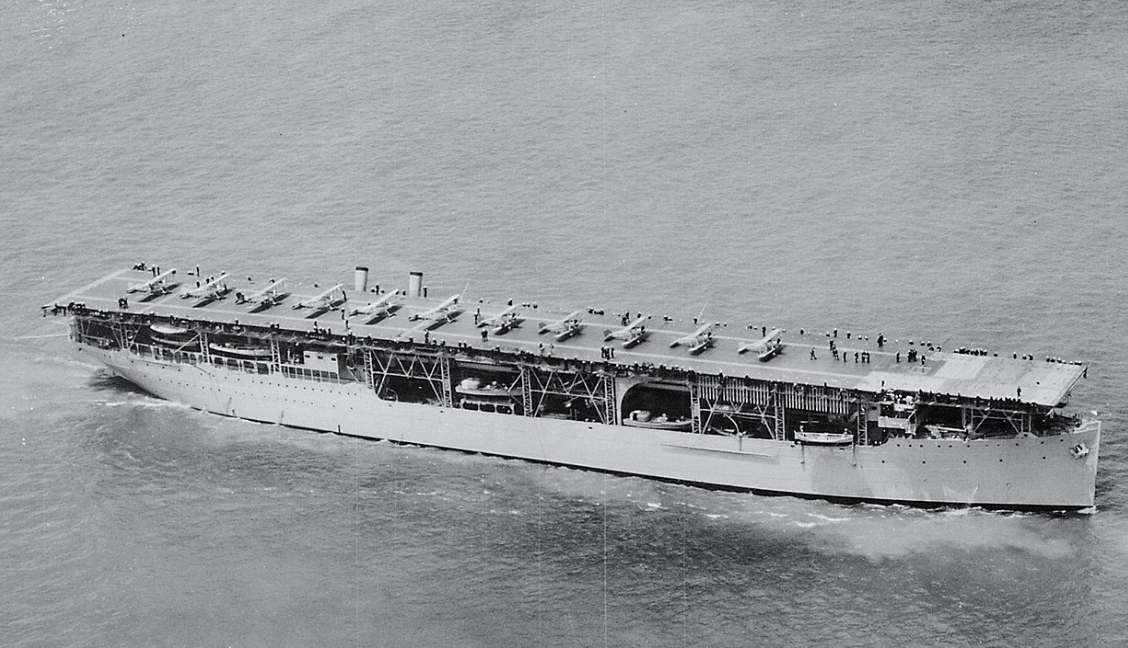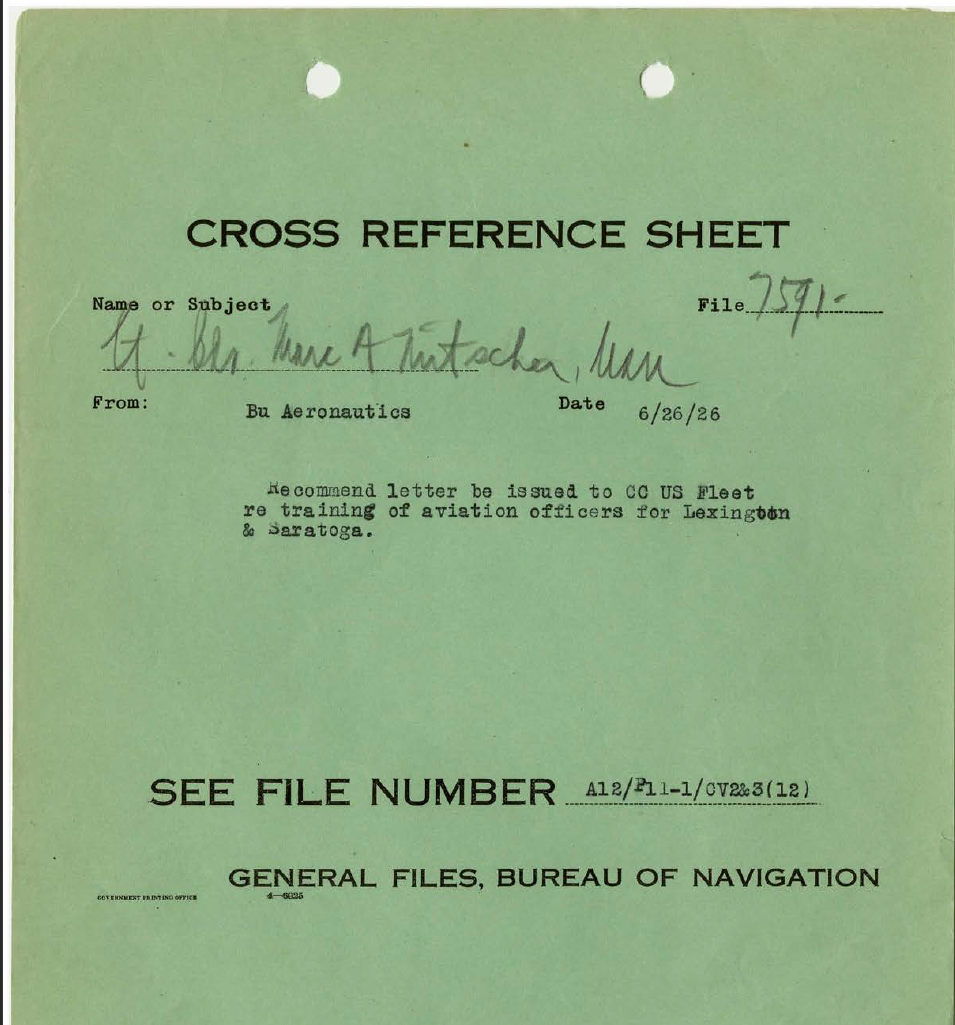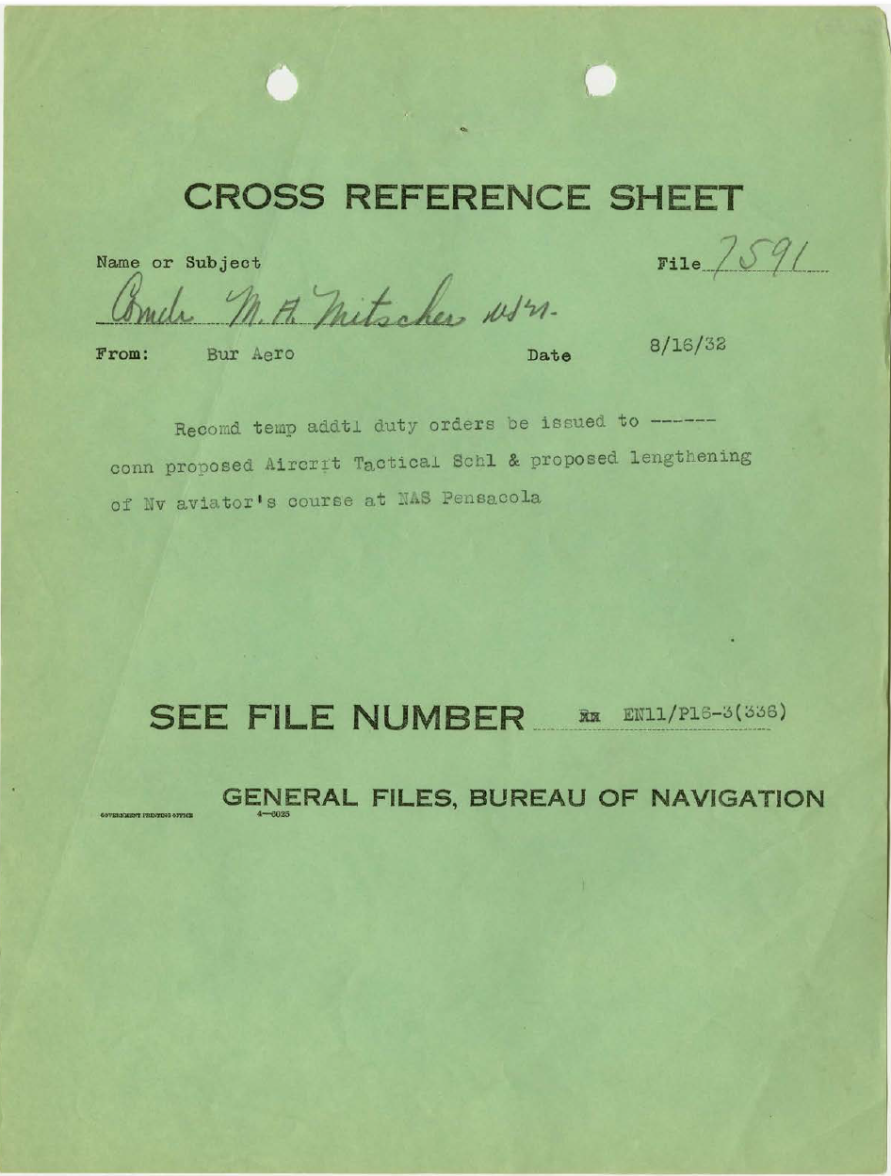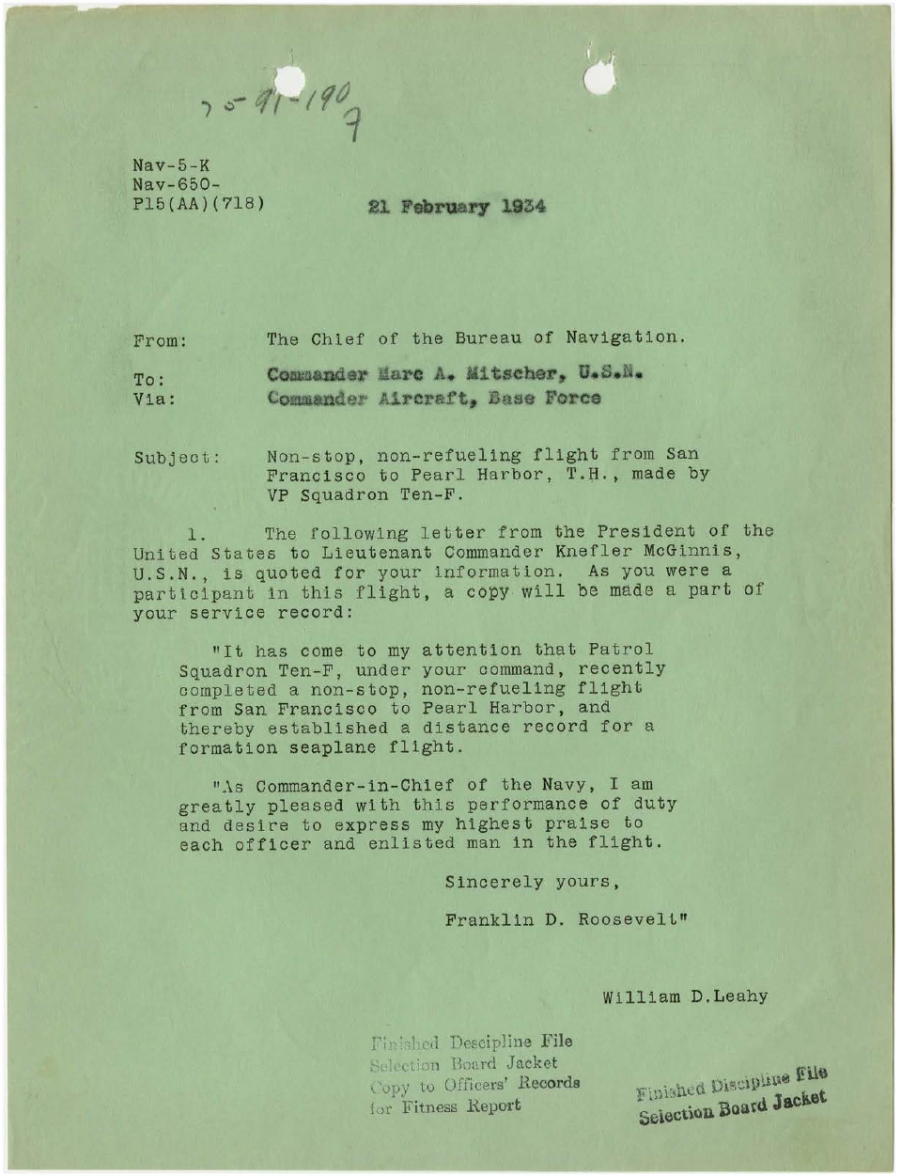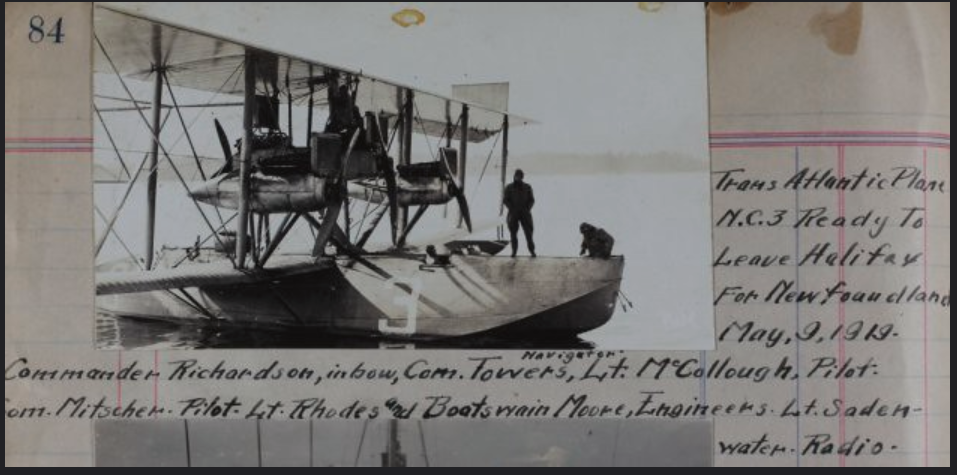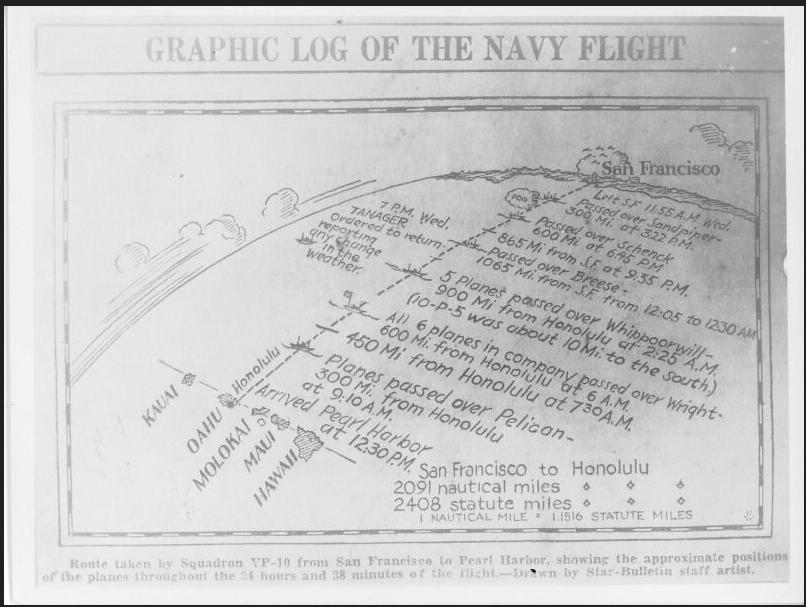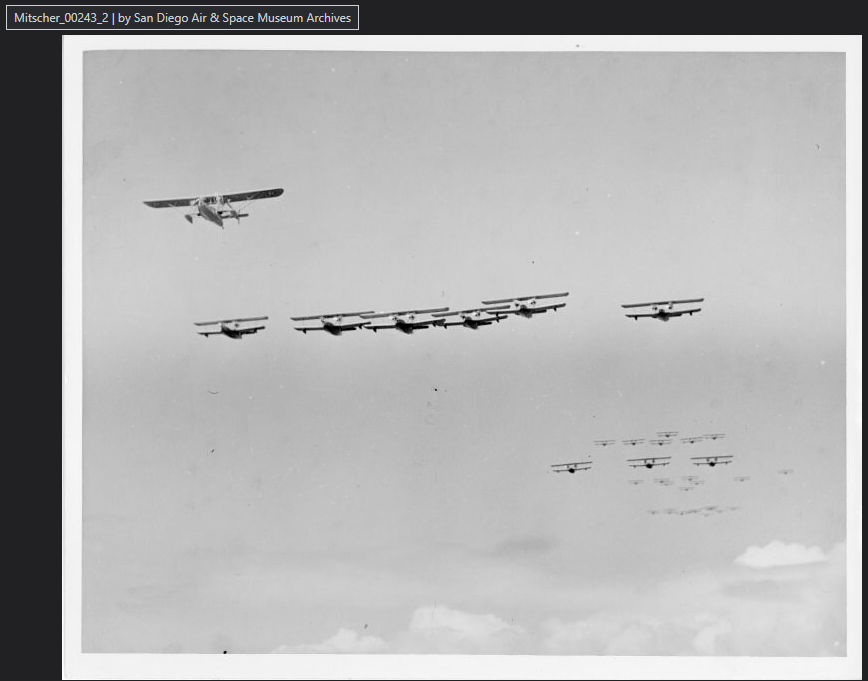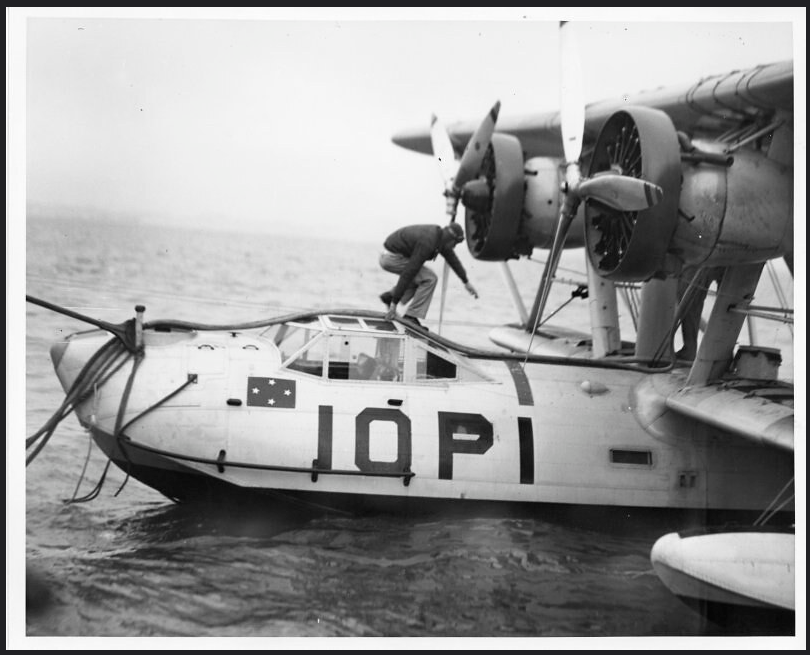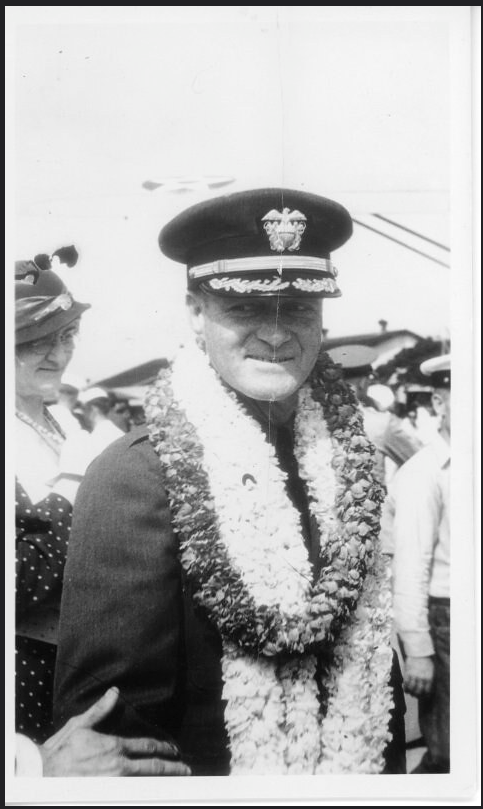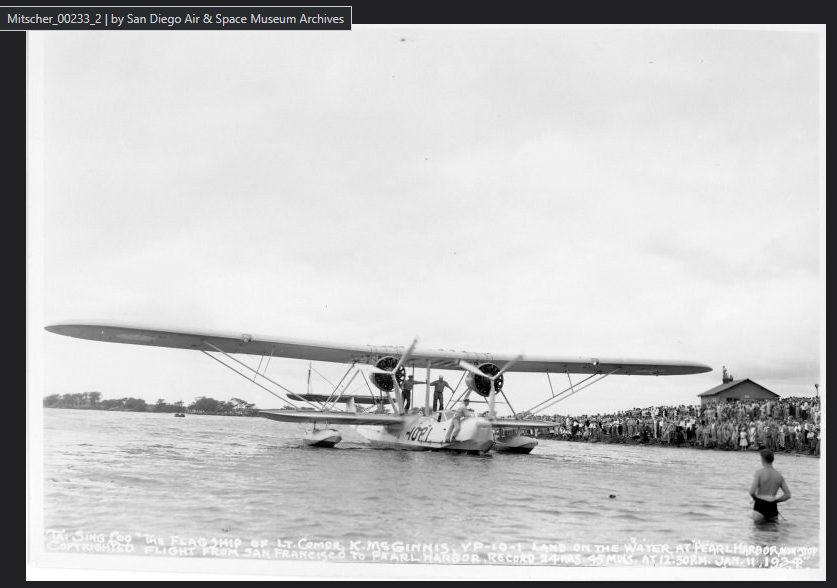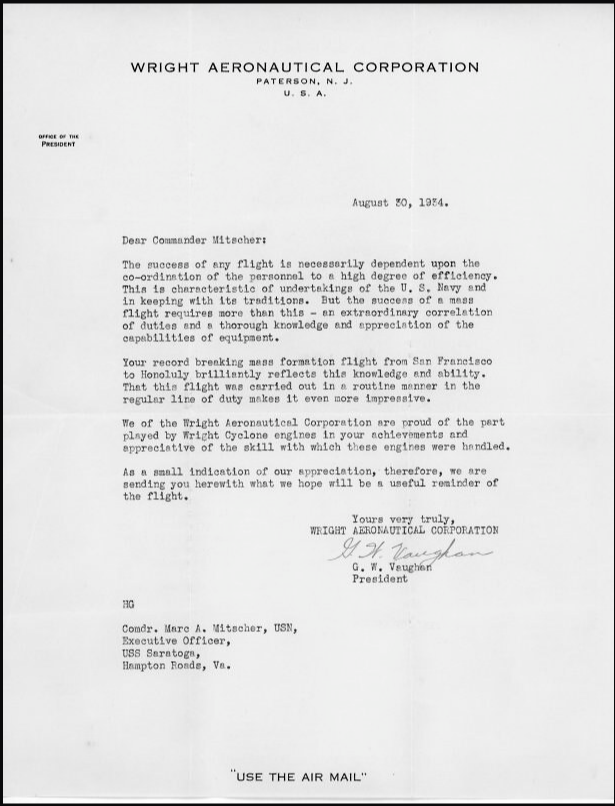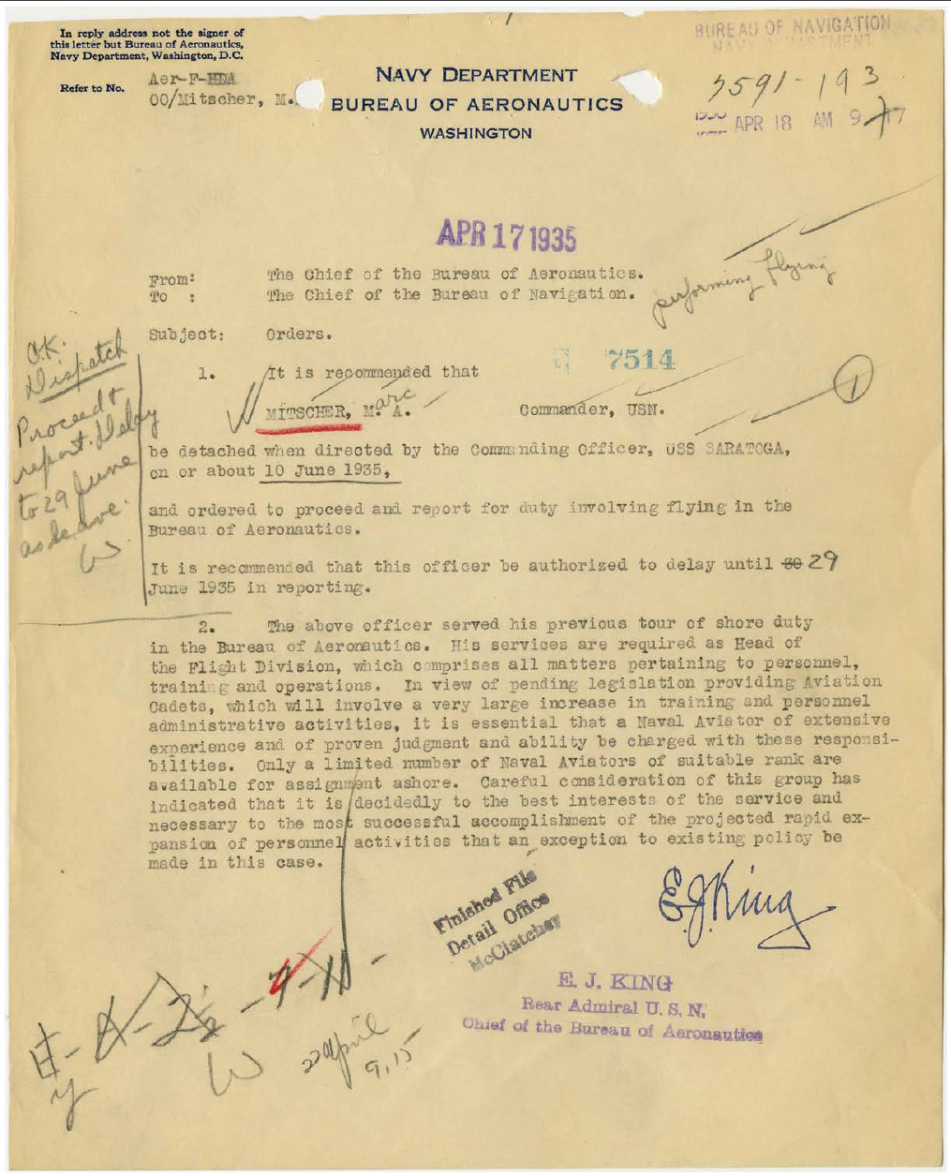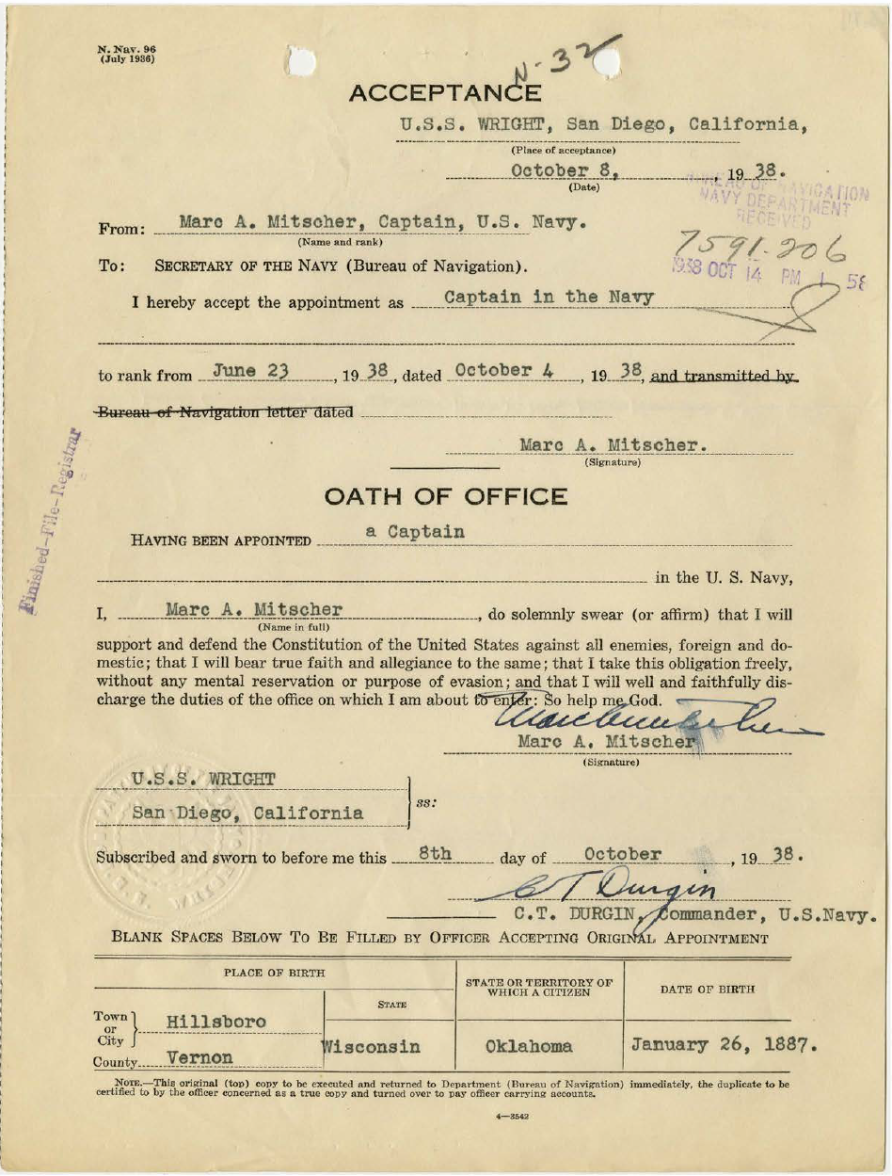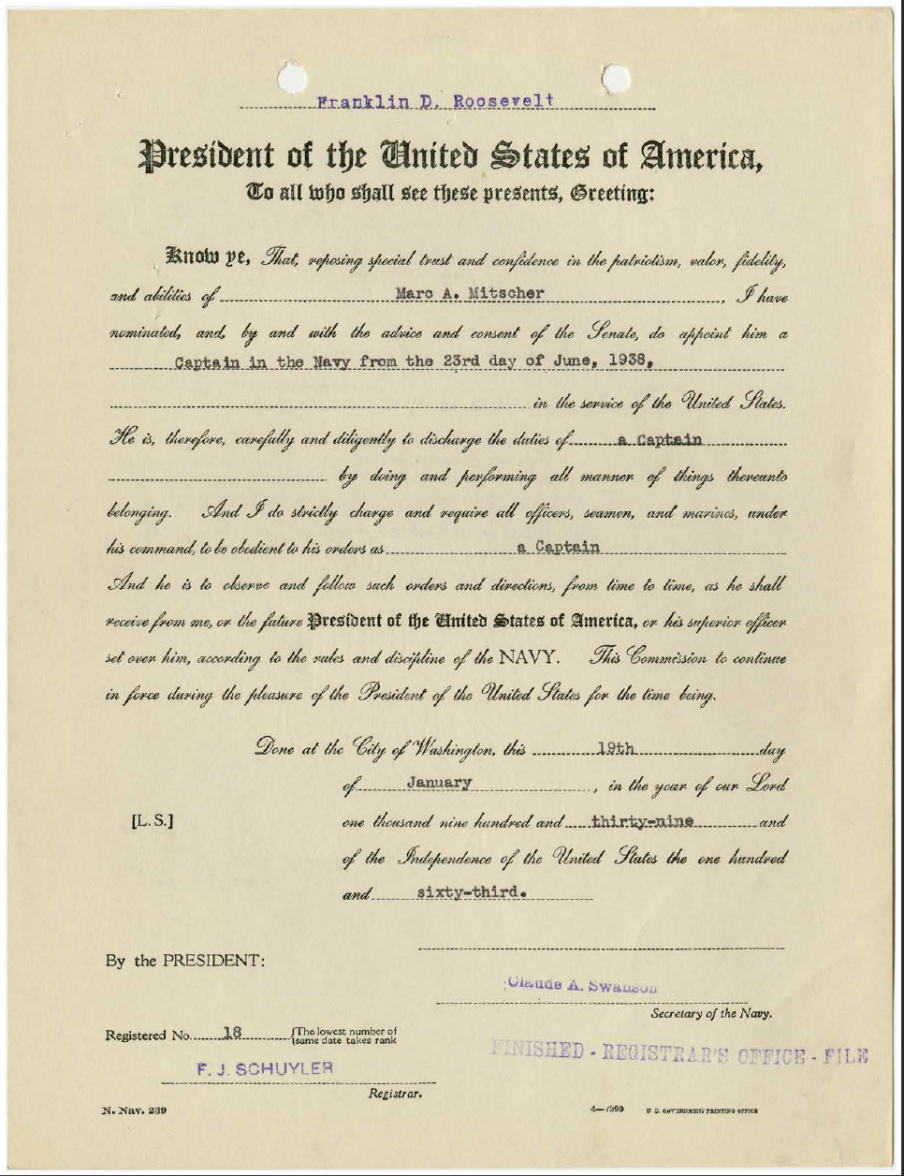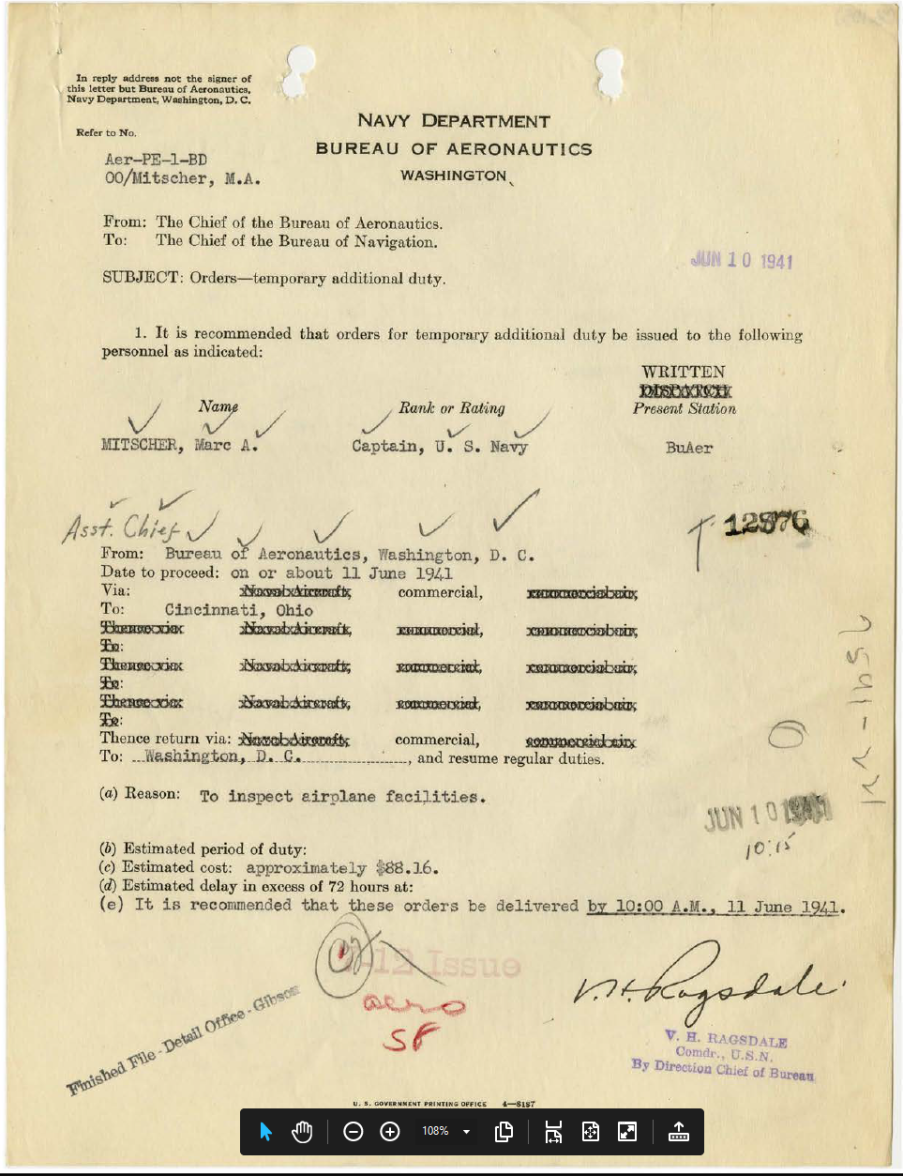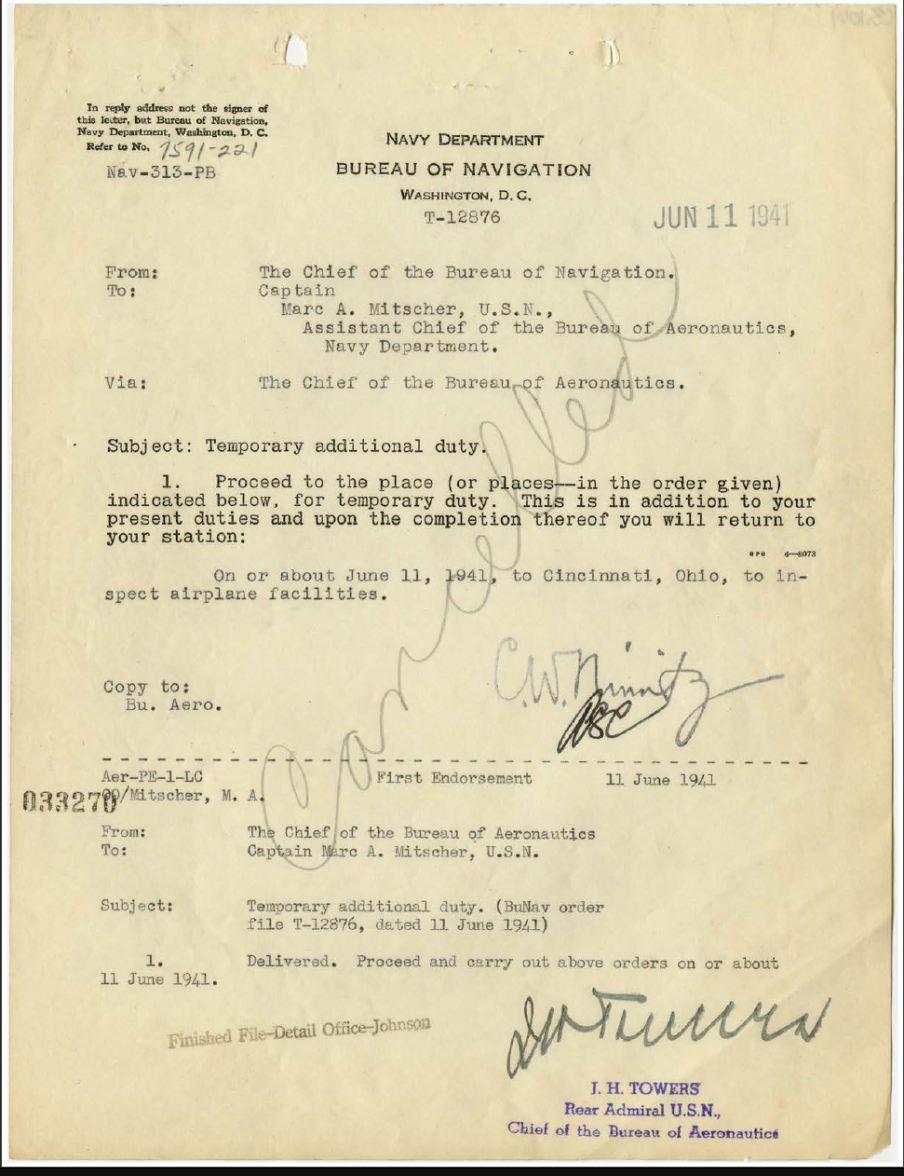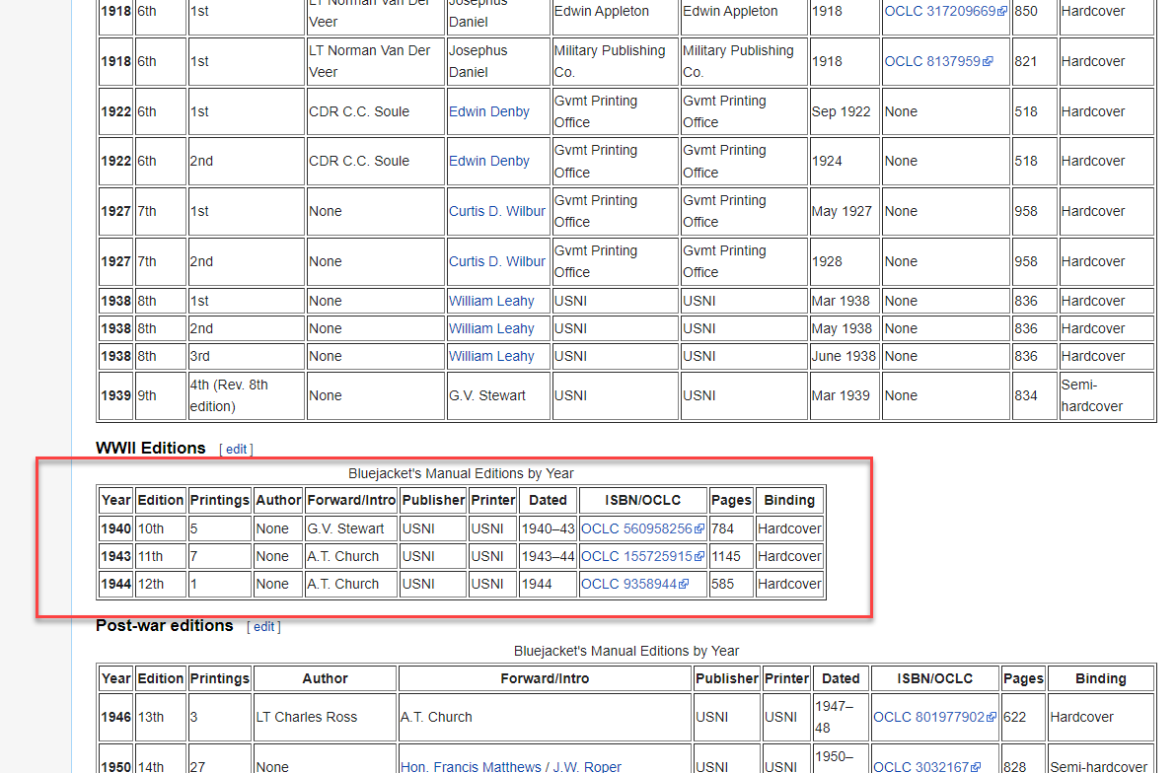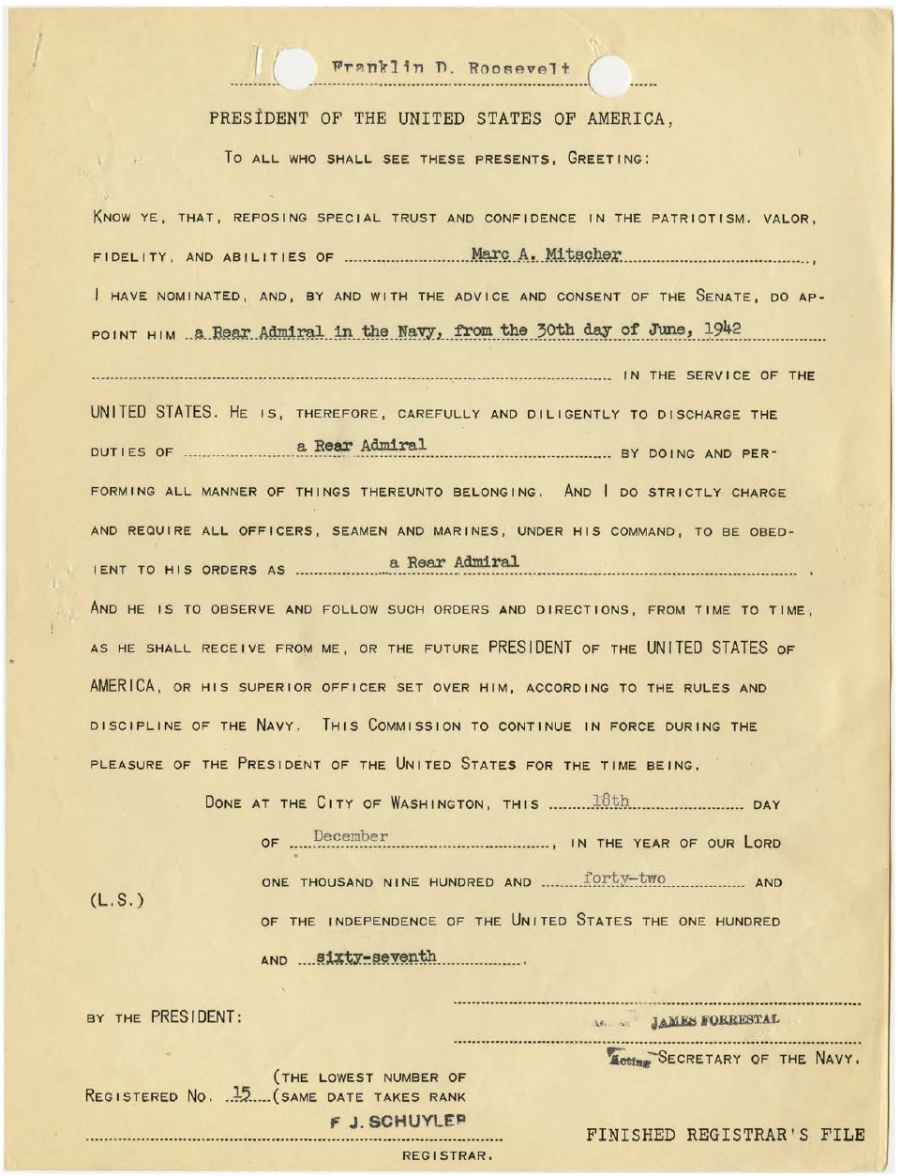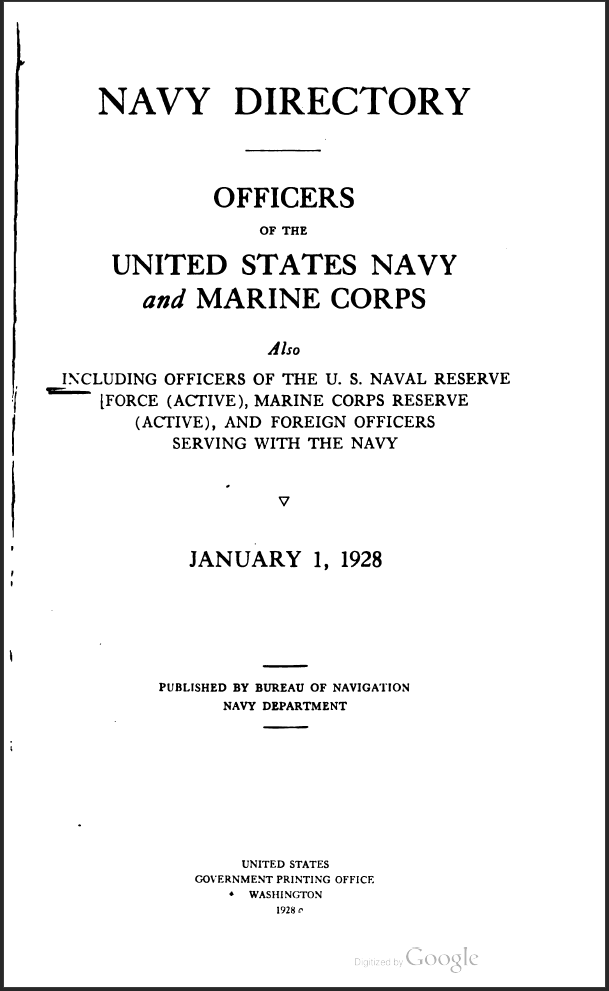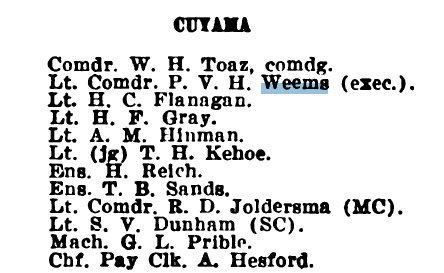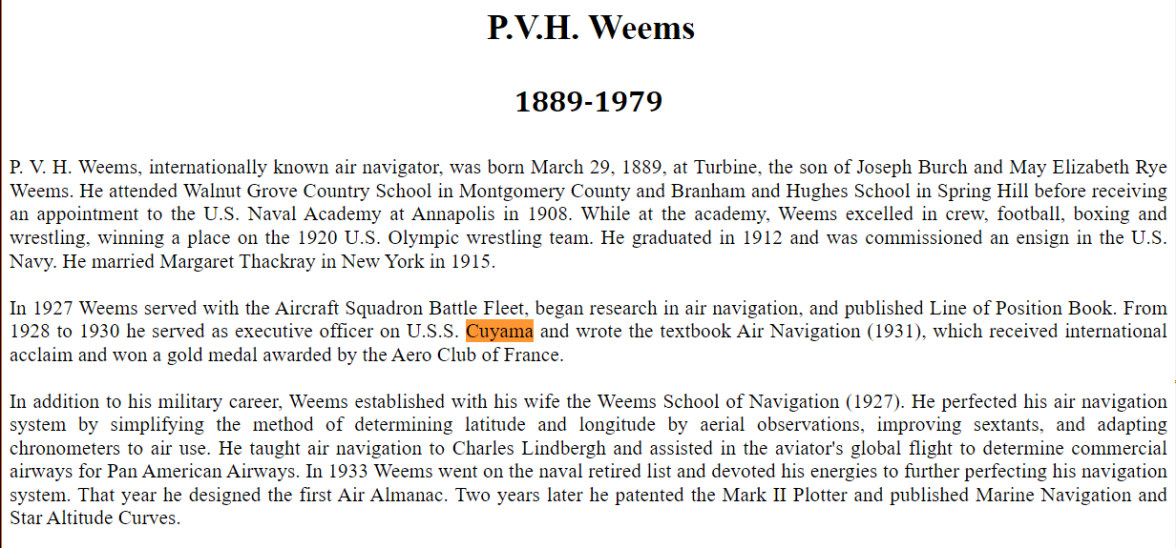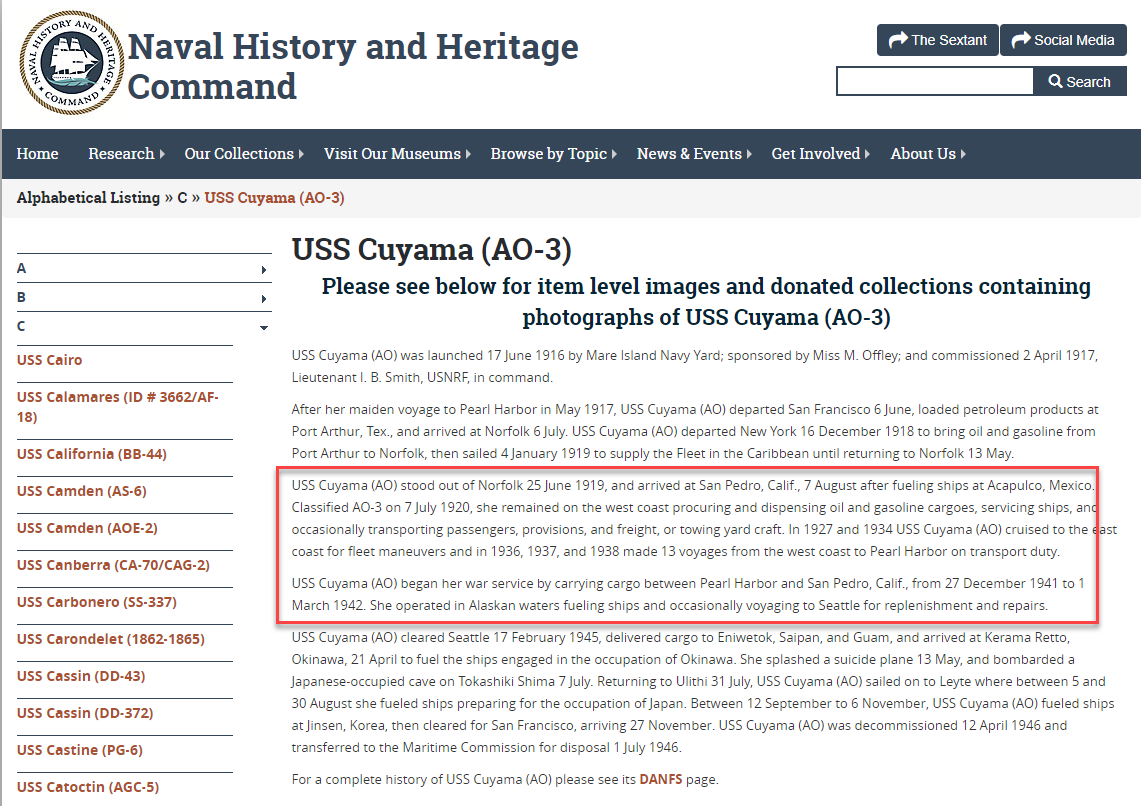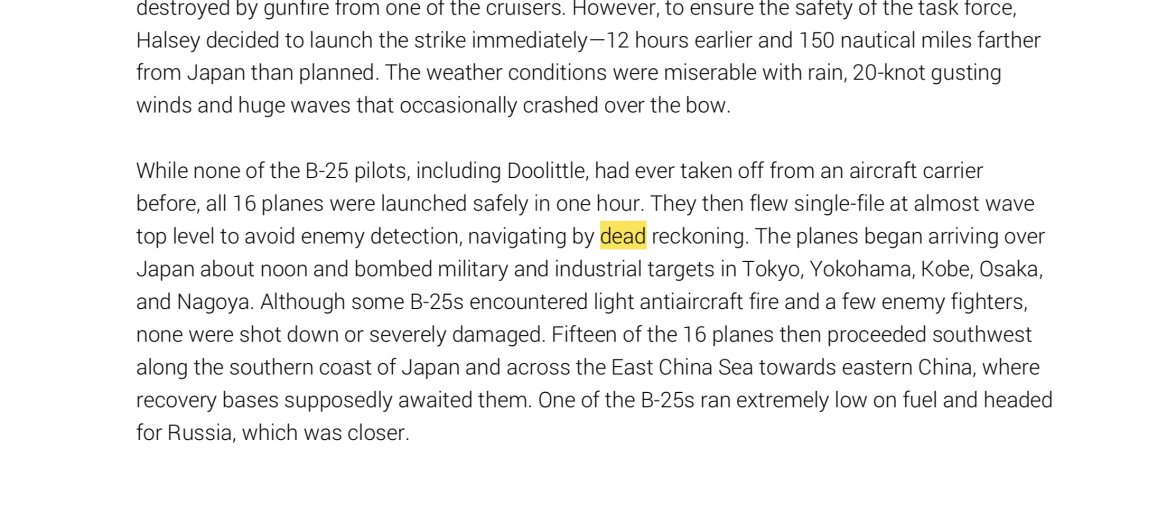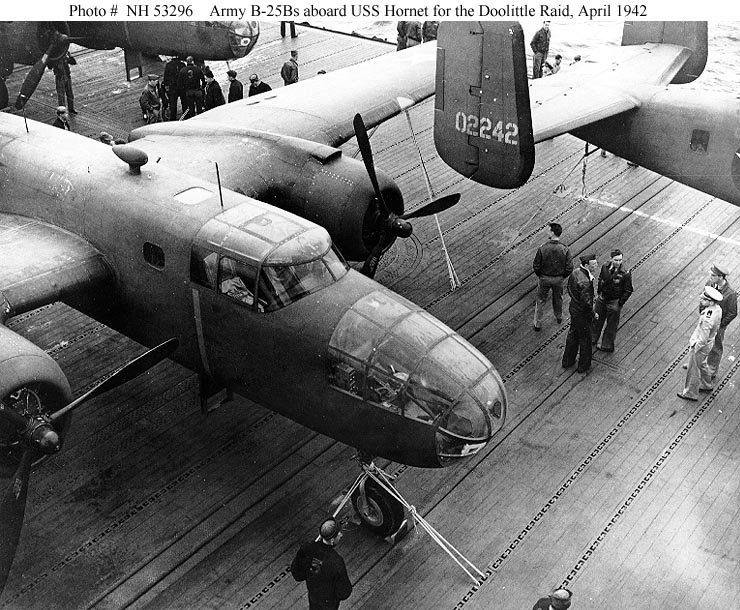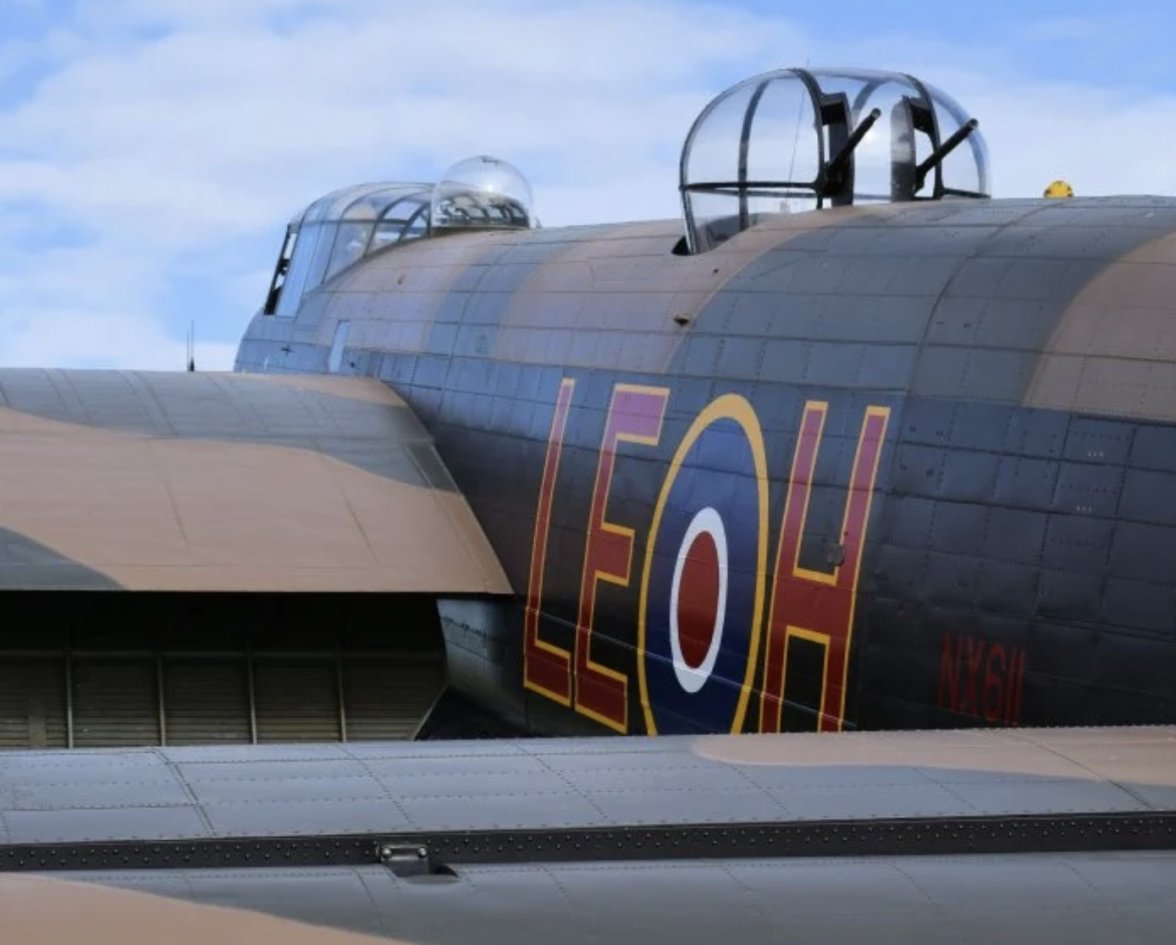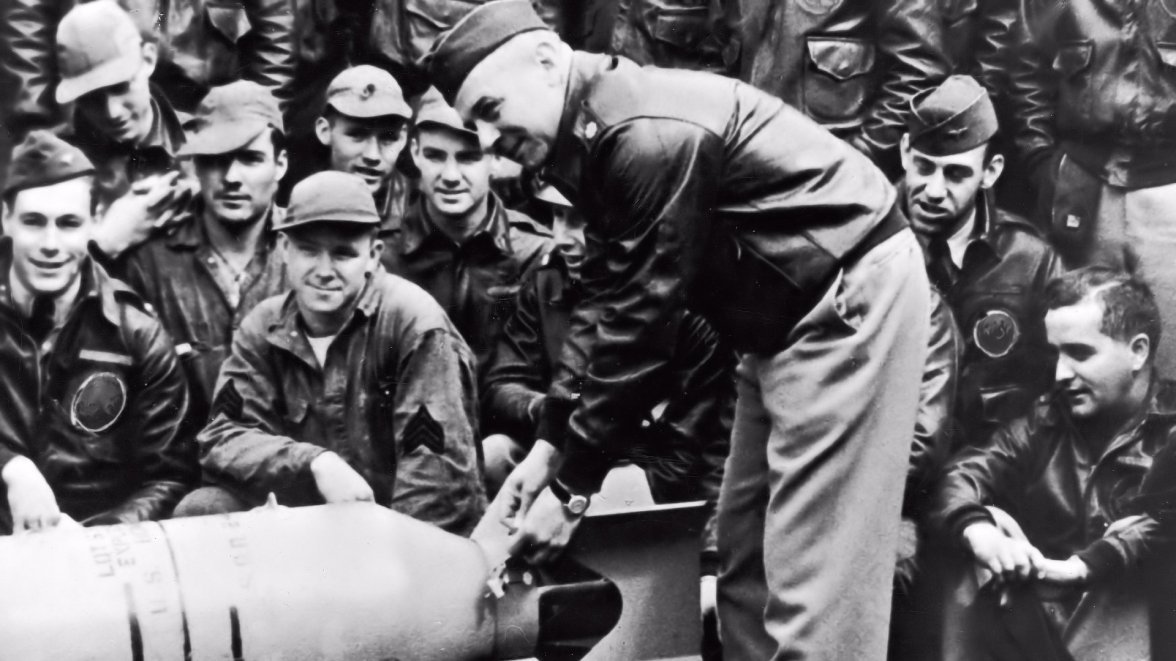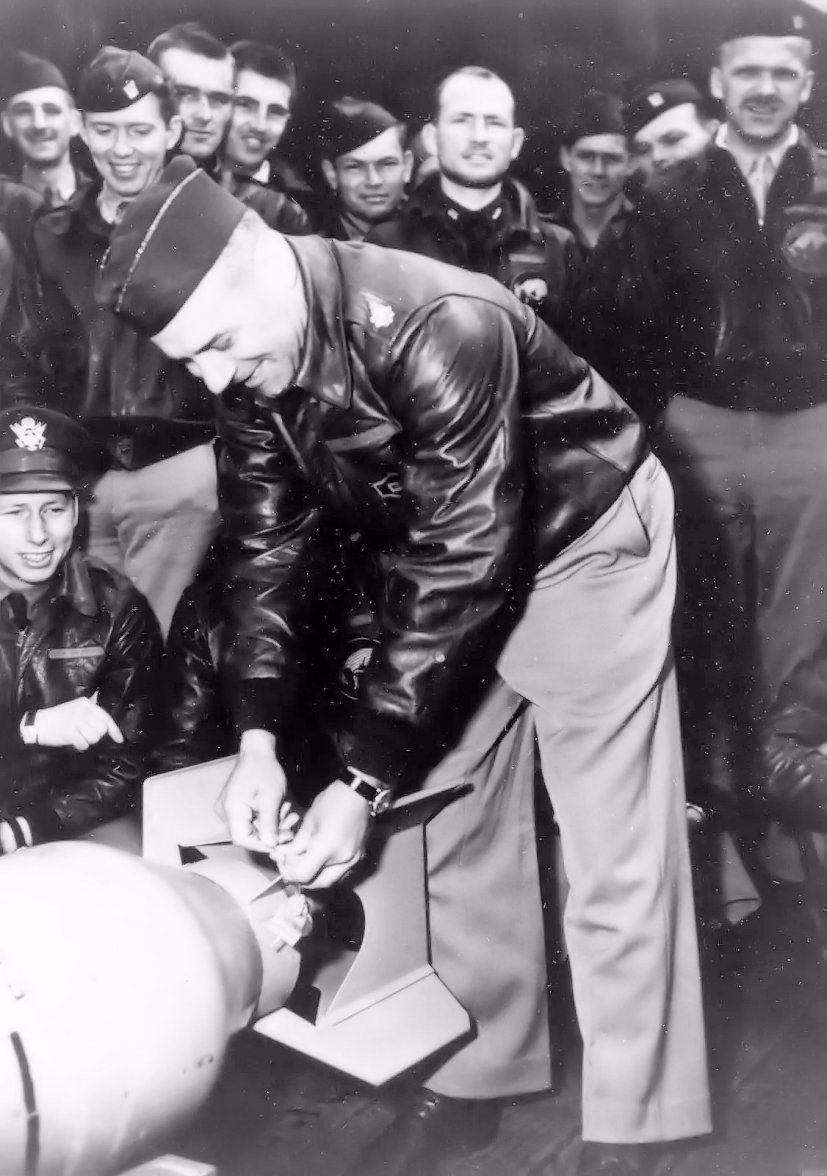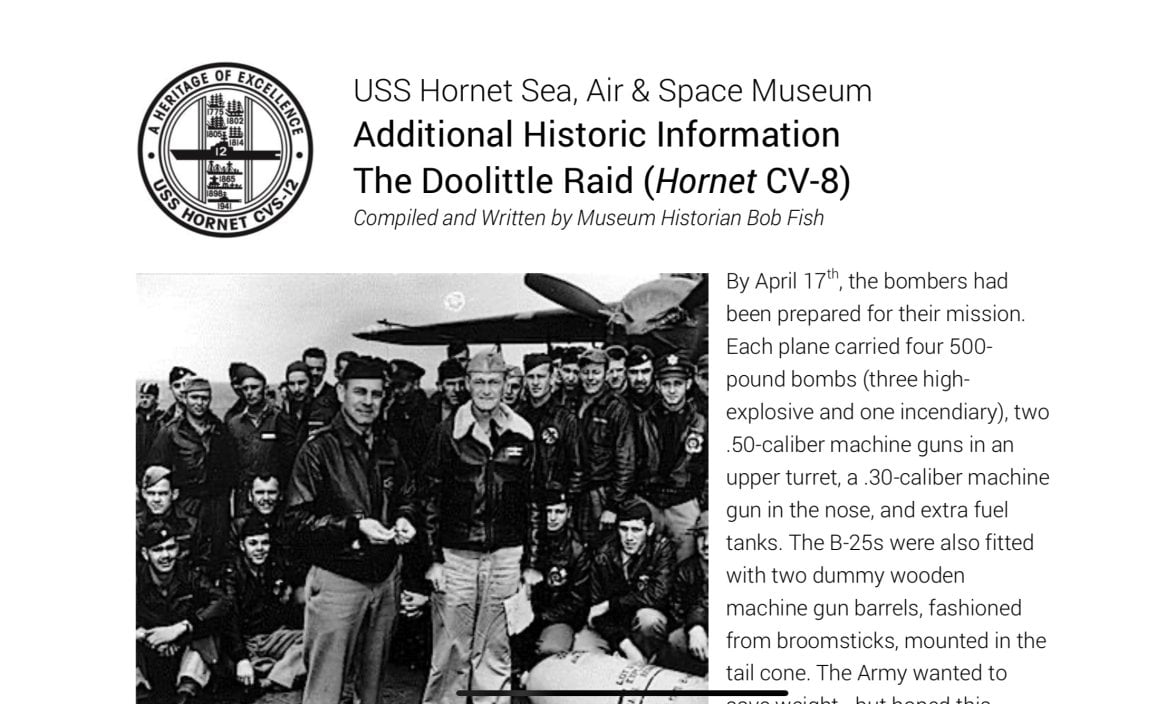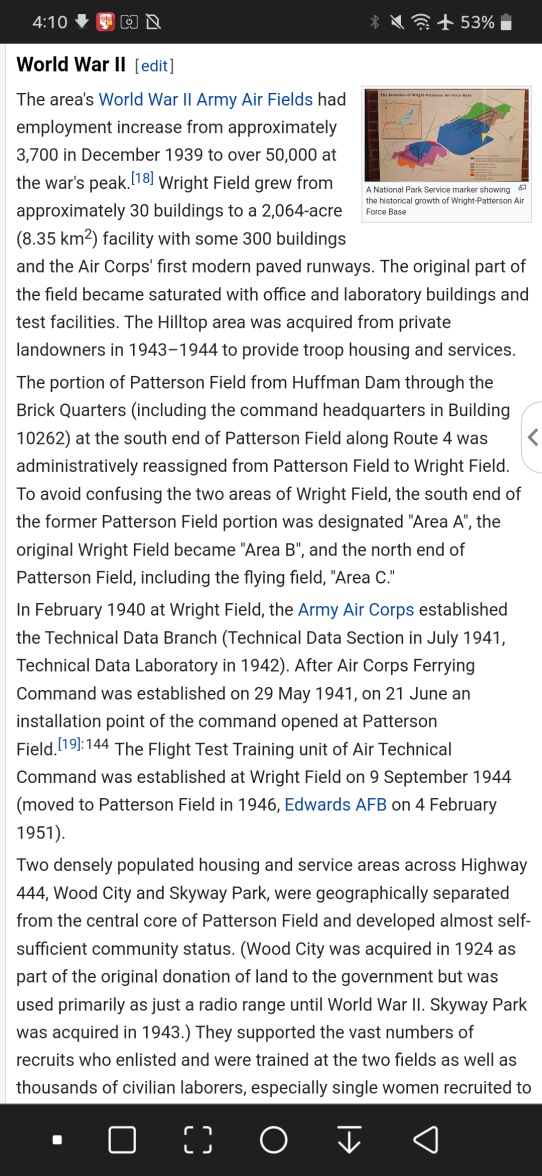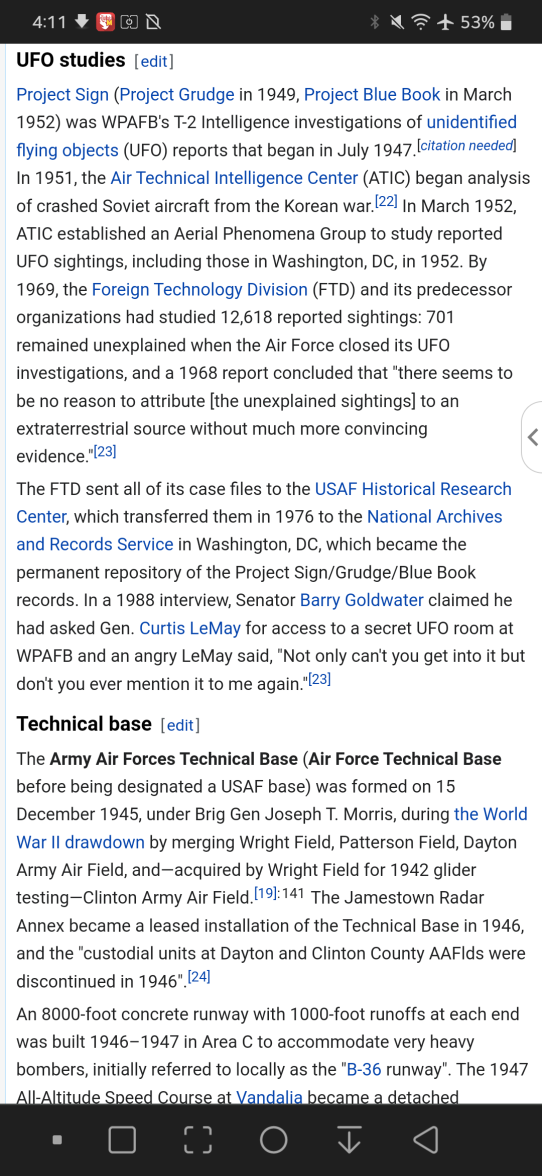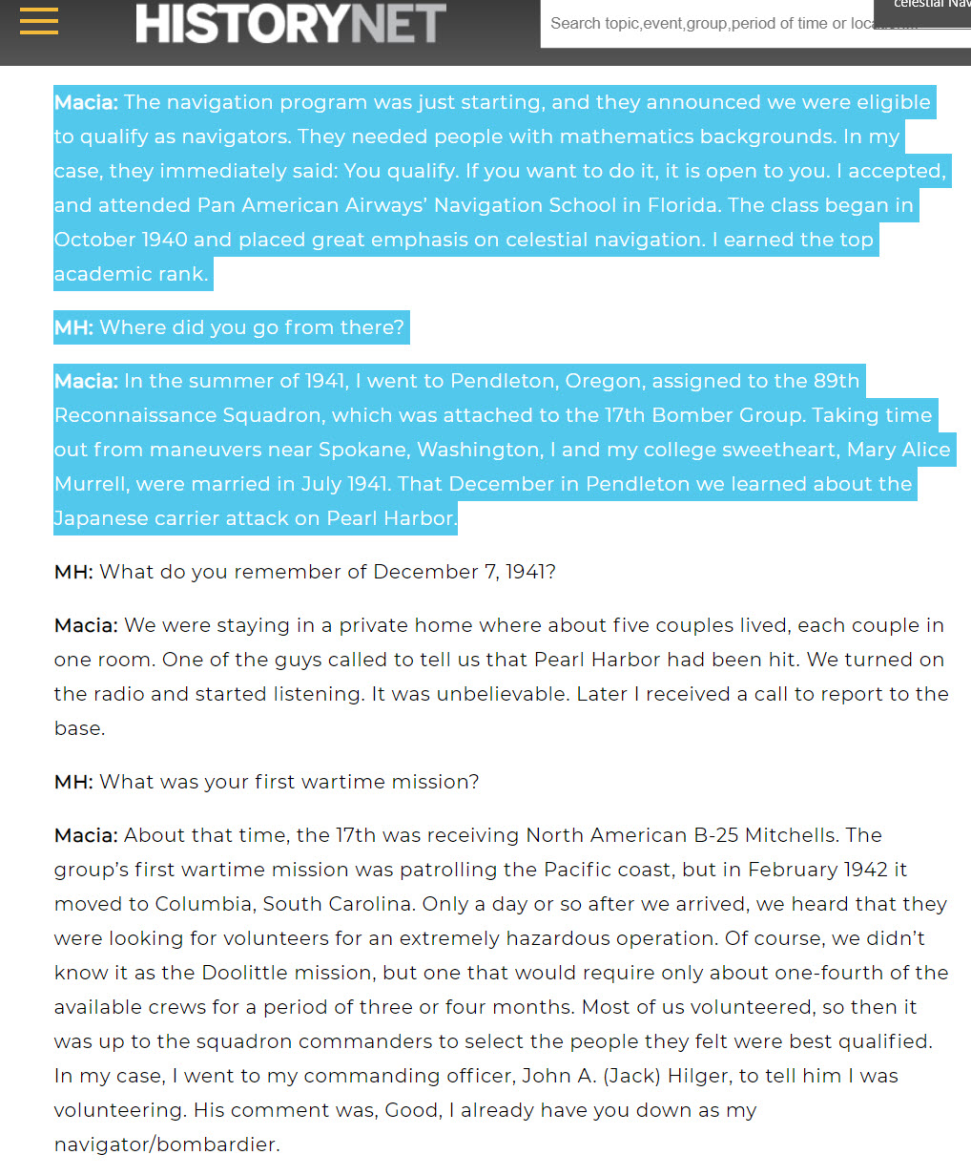Anyone have a historical watch?
Omegafanman
·I think the info on this post (multi- engine propeller aircraft navigation at sea in WW2) and the link to the Amy Johnson Longines Weems training thread are also good to emphasise here regarding the Doolittle raid.
https://omegaforums.net/threads/3-m...ome-dead-reckoning.138286/page-9#post-1975492
https://omegaforums.net/threads/3-m...ome-dead-reckoning.138286/page-9#post-1975492
Lépine
·I have been looking for an explanation for this. Marc Mitscher requested transfer to the USS Langley.
His duties with the USS Saratoga was incomplete. This was a special request to immediately get to the USS Langley.
I don't know how long P.V.H. Weems was there conducting his experiments and working on his Air Navigation
tables on board the USS Langley. Mitscher wrote his request directly to the Bureau of Navigation.
The special request was endorsed by Admiral Moffett. And why is Lindberg on board?
Why would someone want to get off one of the newest aircraft carriers in development that he would have been an executive officer to go to an older USS Langley...
His duties with the USS Saratoga was incomplete. This was a special request to immediately get to the USS Langley.
I don't know how long P.V.H. Weems was there conducting his experiments and working on his Air Navigation
tables on board the USS Langley. Mitscher wrote his request directly to the Bureau of Navigation.
The special request was endorsed by Admiral Moffett. And why is Lindberg on board?
Why would someone want to get off one of the newest aircraft carriers in development that he would have been an executive officer to go to an older USS Langley...
Edited:
Lépine
·If we suppose that something interesting is going on at the USS Langley, how did Mitscher find out about it?
I am not sure...I may find it soon. But it is interesting that both ships were in Southern California within
and hour drive of each other.
Here is a 1930 photo of them berthed next to each other most likely on some exercise as this was not the home port.
And why do these people care about the USS Langley at the time? It is CV-1, the very first CV aircraft carrier, great place to do a lot of experiments in pioneering testing on the first modern aircraft carrier. The USS Saratoga is CV-3.
If BuAero is discussing Aircraft Carriers at the time. The discussion is really only about these three in existence.
The USS Saratoga is parked in the middle. USS Langley is the bottom. If you were interested only in a career,
the USS Langley is definitely a step down from the USS Saratoga. Even the airplanes that could fly off the Langley were a little older by the time the Saratoga was operational.
https://en.wikipedia.org/wiki/USS_Langley_(CV-1)
He has been keeping in touch with all three CV.
I am not sure...I may find it soon. But it is interesting that both ships were in Southern California within
and hour drive of each other.
Here is a 1930 photo of them berthed next to each other most likely on some exercise as this was not the home port.
And why do these people care about the USS Langley at the time? It is CV-1, the very first CV aircraft carrier, great place to do a lot of experiments in pioneering testing on the first modern aircraft carrier. The USS Saratoga is CV-3.
If BuAero is discussing Aircraft Carriers at the time. The discussion is really only about these three in existence.
The USS Saratoga is parked in the middle. USS Langley is the bottom. If you were interested only in a career,
the USS Langley is definitely a step down from the USS Saratoga. Even the airplanes that could fly off the Langley were a little older by the time the Saratoga was operational.
https://en.wikipedia.org/wiki/USS_Langley_(CV-1)
He has been keeping in touch with all three CV.
Edited:
Lépine
·Mitscher as Executive Flight Officer was responsible for pilot training as seen above, he also continued his own education in Navigator courses.
As mentioned before, he commanded a record breaking long distance flight on board the PBY Catalina sea planes to Hawaii.
I believe this was his second world distance record.
World's First TransAtlantic Flight
This was the start of the second World Record.
As mentioned before, he commanded a record breaking long distance flight on board the PBY Catalina sea planes to Hawaii.
I believe this was his second world distance record.
World's First TransAtlantic Flight
This was the start of the second World Record.
Lépine
·Lépine
·Lépine
·
Edited:
Lépine
·I did mention that most likely Mitscher would need the newest Bluejackets if he is the commander of an appointment.
So, what would he be doing with a 1940 manual in 1941 if he did loose it at that time in Ohio. I really don't know when he lost it or if he lost it in Ohio, but it would explain a lot if that is what happened.
Bluejackets are not revised every single year. The 1940 edition was still okay until 1943.
So, what would he be doing with a 1940 manual in 1941 if he did loose it at that time in Ohio. I really don't know when he lost it or if he lost it in Ohio, but it would explain a lot if that is what happened.
Bluejackets are not revised every single year. The 1940 edition was still okay until 1943.
Lépine
·Bombing of Pearl Harbor December 7th, 1941. It didn't take long for the planning to begin to strike back at Tokyo. Ohio was then the center of all the activities. New planes, bomber training, etc... The new CV-8 needs planes.
Lépine
·The Doolittle Raid took place April 18,1942. There will be no opportunity to loose the book in Ohio by that time.

By June 30, 1942. He is Rear Admiral Marc A. Mitscher. He would have no need for the book marked Captain Marc A Mitscher
in my opinion. It is my opinion that the Bluejacket was lost in Ohio as he was getting the Hornet fitted with aircraft in 1941-1942.

By June 30, 1942. He is Rear Admiral Marc A. Mitscher. He would have no need for the book marked Captain Marc A Mitscher
in my opinion. It is my opinion that the Bluejacket was lost in Ohio as he was getting the Hornet fitted with aircraft in 1941-1942.
Edited:
Lépine
·I ran into one problem with Mitscher meeting directly with Weems.
By 1928, P.V.H. Weems is the Executive Officer of the USS Cuyama.
How did Lindberg meet him onboard the USS Langley April 1928?
And, Mitscher is assigned to the USS Saratoga.
I looked up on Weems Path website and found some interesting information. So even though the military records show Weems was on board another ship. He was still going back and forth to the USS Langley while being the XO of USS Cuyama and it is noted that he continued his research through 1931 and ran his new San Diego Navigation School that opened in 1927 all at the same time.
The USS Cuyama and the USS Saratoga are both home port San Pedro during 1928. So it seems that, which boat they were assigned to may not help or hurt the question did they meet in person at that time. If they did meet, I still think it has to do with the USS Langley late 1928-1929.
At this point, my best guess is that Mitscher could have learned from
--Pan Am
--Gatty
--Weems
--San Diego Weems Navigation School
Most likely it would have been in San Diego.
By 1928, P.V.H. Weems is the Executive Officer of the USS Cuyama.
How did Lindberg meet him onboard the USS Langley April 1928?
And, Mitscher is assigned to the USS Saratoga.
I looked up on Weems Path website and found some interesting information. So even though the military records show Weems was on board another ship. He was still going back and forth to the USS Langley while being the XO of USS Cuyama and it is noted that he continued his research through 1931 and ran his new San Diego Navigation School that opened in 1927 all at the same time.
The USS Cuyama and the USS Saratoga are both home port San Pedro during 1928. So it seems that, which boat they were assigned to may not help or hurt the question did they meet in person at that time. If they did meet, I still think it has to do with the USS Langley late 1928-1929.
At this point, my best guess is that Mitscher could have learned from
--Pan Am
--Gatty
--Weems
--San Diego Weems Navigation School
Most likely it would have been in San Diego.
Edited:
Omegafanman
·Really enjoying this thread and the detailed time consuming research. Given the short training time and the fact that standard crews were picked for the Doolittle flight plus the lack of an Astrodome on the aircraft, my gut feel was despite the night flying they did not use Celestial navigation. The low level nature of the flight also made cloud cover a higher risk to prevent observations. A lot of the large RAF bombers did have an Astrodome and the B25 was modified to add it later in the war (instead of the flat roof window). Of course technology overtook the need to a degree in Europe. There is a lot of land to hit on the Doolittle flight plan with subsequent Navigation from landmarks possible. I have now found a document (excerpt below) which does refer to dead reckoning being used for the mission.
Amazingly brave crews undertaking a mission like this without even a radio in most of the planes and gun turrets removed to save weight.
I wonder what the watch is which Doolittle is wearing just before the raid (pictured below).
.
.
Amazingly brave crews undertaking a mission like this without even a radio in most of the planes and gun turrets removed to save weight.
I wonder what the watch is which Doolittle is wearing just before the raid (pictured below).
.
.
Edited:
Lépine
·The crew did use celestial navigation. I have somewhere in a biography a story of a crew that tried to locate the coast of China with Weems method.
To get the planes light enough to take off from Shangi-La, Mitcher and Doolittle supervised the removal of all non-mission critical equipment. These planes even sacrificed the tail guns. I think radios was removed, have to recheck. Sextant readings were done from the nose. Also the Norton Bomb site automatic targeting system was removed. The bomber was training with a simple angled bomb site. Angle of approach, speed, altitude was therefore predetermined for Tokyo. Saves weight, but also kept the automated system technology from getting into Japanese hands. Would make Lockbourne bomber training base useful for testing the theory out on use of the new bomber sight and practicing it since it is close by to Wright Patterson. Even the amount of bombs had to be considered to reduce take off weight. The point of the mission wasn't to destroy Tokyo as much as it was to show the United States could reach Japan.
Even the gas tanks on the Mitchell was replaced with rubber tanks. Saves weight, but also allows them to make them bigger. All the redesign was occurring at Wright Patterson Ohio. The crew didn't learn to take-off from the Hornet which was about half the take-off runway distance with better technique. The Mitchells were extensive modified to reduce weight, increase speed, and range. The rear guns were broom sticks.
I checked Doolittle's watch. It is a large time only watch with no rotating bezel. I will find the high rez photo of the watch. I have it on the computer. I don't have the data on my phone. 😀
To get the planes light enough to take off from Shangi-La, Mitcher and Doolittle supervised the removal of all non-mission critical equipment. These planes even sacrificed the tail guns. I think radios was removed, have to recheck. Sextant readings were done from the nose. Also the Norton Bomb site automatic targeting system was removed. The bomber was training with a simple angled bomb site. Angle of approach, speed, altitude was therefore predetermined for Tokyo. Saves weight, but also kept the automated system technology from getting into Japanese hands. Would make Lockbourne bomber training base useful for testing the theory out on use of the new bomber sight and practicing it since it is close by to Wright Patterson. Even the amount of bombs had to be considered to reduce take off weight. The point of the mission wasn't to destroy Tokyo as much as it was to show the United States could reach Japan.
Even the gas tanks on the Mitchell was replaced with rubber tanks. Saves weight, but also allows them to make them bigger. All the redesign was occurring at Wright Patterson Ohio. The crew didn't learn to take-off from the Hornet which was about half the take-off runway distance with better technique. The Mitchells were extensive modified to reduce weight, increase speed, and range. The rear guns were broom sticks.
I checked Doolittle's watch. It is a large time only watch with no rotating bezel. I will find the high rez photo of the watch. I have it on the computer. I don't have the data on my phone. 😀
Edited:
Omegafanman
·The crew did use celestial navigation. I have somewhere in a biography a story of a crew that tried to locate the coast of China with Weems method.
To get the planes light enough to take off from Shangi-La, Mitcher and Doolittle supervised the removal of all non-mission critical equipment. These planes even sacrificed the tail guns. I think radios was removed, have to recheck. Sextant readings were done from the nose. Also the Norton Bomb site automatic targeting system was removed. The bomber was training with a simple angled bomb site. Angle of approach, speed, altitude was therefore predetermined for Tokyo. Saves weight, but also kept the automated system technology from getting into Japanese hands. Would make Lockbourne bomber training base useful for testing the theory out on use of the new bomber sight and practicing it since it is close by to Wright Patterson. Even the amount of bombs had to be considered to reduce take off weight. The point of the mission wasn't to destroy Tokyo as much as it was to show the United States could reach Japan.
Even the gas tanks on the Mitchell was replaced with rubber tanks. Saves weight, but also allows them to make them bigger. All the redesign was occurring at Wright Patterson Ohio. The crew didn't learn to take-off from the Hornet which was about half the take-off runway distance with better technique. The Mitchells were extensive modified to reduce weight, increase speed, and range. The rear guns were broom sticks.
I checked Doolittle's watch. It is a large time only watch with no rotating bezel. I will find the high rez photo of the watch. I have it on the computer. I don't have the data on my phone. 😀
That would make sense - a mixture and dead reckoning and using celestial for a fix. I imagine they wanted as much information as possible to avoid a lonely death at sea or capture. It would be interesting to see the spec for the subsequent B25 upgrade. They must have learned a lot in terms of navigational needs. The Weems method comes into its own on long slower speed flights over water (pre sattelite Nav of course).
Lépine
·Lépine
·That would make sense - a mixture and dead reckoning and using celestial for a fix. I imagine they wanted as much information as possible to avoid a lonely death at sea or capture. It would be interesting to see the spec for the subsequent B25 upgrade. They must have learned a lot in terms of navigational needs. The Weems method comes into its own on long slower speed flights over water (pre sattelite Nav of course).
Yes, there was extensive planning involved. The original plan was for the crews to bomb Tokyo and then fly to China to a designated airbase. From there they would be brought back. However, as we know, they launched early. They bombed Tokyo. They ran out of fuel before getting to the base in China. The weather was overcast as reported by one of the navigators in his biography and his crew begged him to get a location fix using a sextant, but the heavy overcast made that impossible as the crashed on a beach. They were lost and scattered on the coastline of China.
But, going back to the mission planning, it would be unimaginable at this stage for Mitscher and Doolittle to not know Celestial Navigation by Weems. The crew trained with Pan Am. It was part of the plan on how the crew would navigate to China.
Lépine
·Lépine
·So I know I know Omegafanman, you are intelligent as demonstrated by cracking my other watch puzzle. You should be asking yourself, well if the crew was versed in Celestial Navigation and if that was all part of the planning as indicated by how the Bomber Group 17th was recruited and sent off to Pan Am for training. Instead of asking about the dome, you should be asking where are the Weems watches. Well, one problem with the crew photographs is that you can't see the watches they were wearing, but more importantly, by 1941, the Weem watch was obsolete.
MWR people can back me up. The American Weems 11.26N was replaced with the military A-11 Weems in 1940. And, there was already a GCT and GMT Waltham and Elgin pocket watches and a time conversion calculating machine available. My thoughts are that the 47mm Weems were too expensive for the Army to procure more and they are extremely rare in the Navy. Only 1200 A-11 weems were procured and evalutions in 1941 reported that the watches were just too small to read.
MWR people can back me up. The American Weems 11.26N was replaced with the military A-11 Weems in 1940. And, there was already a GCT and GMT Waltham and Elgin pocket watches and a time conversion calculating machine available. My thoughts are that the 47mm Weems were too expensive for the Army to procure more and they are extremely rare in the Navy. Only 1200 A-11 weems were procured and evalutions in 1941 reported that the watches were just too small to read.
Edited:
